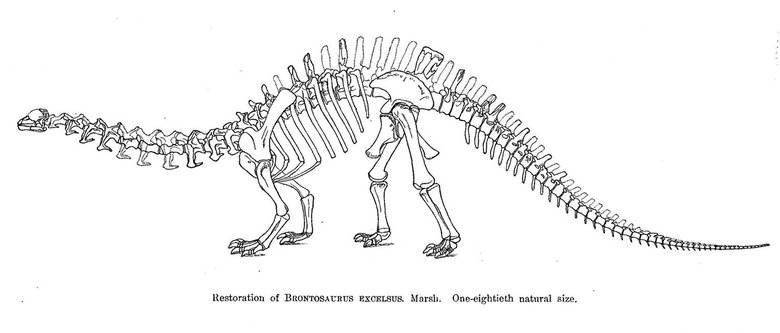Brontosaurus is back! (in 60 years or so)
This week there's word going round that Brontosaurus is back. In fact, though, the name is only back according to one study. One study does not make the entire scientific community change its mind. The timeline you'll see below shows when the Brontosaurus was first discovered, when the name Brontosaurus was retired, and how long it took for the entire scientific community to accept the realities therein. It's not as simple as most news stories on this subject this week would have you believe.
The first appearance of the name Brontosaurus was all the way back in 1878 in a paper called "Notice of New Jurassic Reptiles." The first appearance of the dinosaur Apatosaurus was in a paper published in 1877, two years before the Brontosaurus.
NOTE: See our original Brontosaurus is back from the dead article from earlier this week for more details!
The same paleontologist published both: Othniel Charles Marsh.
In 1903, paleontologist Elmer Riggs published a study which found traits numerous enough to clump Apatosaurus and Brontosaurus together, effectively erasing the name "Brontosaurus" from science books everywhere.
But – like the study here in 2015, it's not that simple.

Just two years later, in 1905, the first "Brontosaurus" skeleton was put on display in New York City. It would be all the way until the 1970s until the vast majority of modern museums would take the name Brontosaurus out of their displays.
Again – in a simple timeline:
• 1877 Apatosaurus discovered• 1879 Brontosaurus discovered• 1903 Paper lumps Brontosaurus in with Apatosaurus• 1905 First "Brontosaurus" skeleton appears in museum• 1970s Most museums rename Brontosaurus Apatosaurus• 2015 Paper re-recognizes Brontosaurus as separate genus
So don't get all excited when you head to your local dinosaur museum and see the placards still reading "Apatosaurus excelsus" (the proper name for the Brontosaurus inside the Apatosaurus family) when you know it should be Brontosaurus excelsus.
Discovery can be quick, but scientific agreement is slow – as well it should be!
